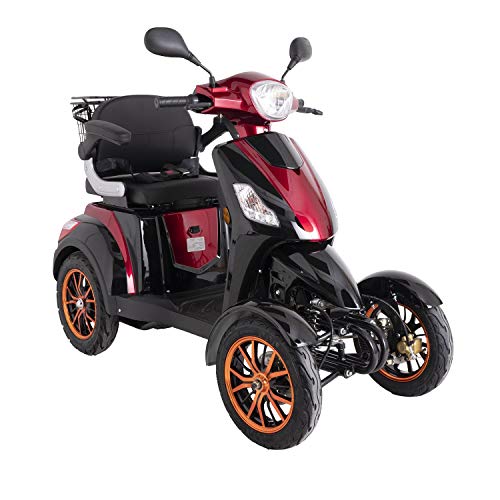12 Companies That Are Leading The Way In Electric Assistive Technology
페이지 정보
Jacinto 작성일25-01-06 01:55본문
 Electric Assistive Technology
Electric Assistive TechnologyBy 2030, the number of people who need assistive devices will increase by a factor of two. These devices can be bought in stores or modified (like adding tennis balls to an existing walker) or even customised.
Some examples of assistive technology include pencil grips ergonomic kitchen tools (such as OXO good grips) and keyboards with specialized features. More advanced devices can also be considered, such as screen magnifiers.
Functional electrical stimulation
Functional electrical stimulation (FES) applies small electric mobility scooter near me charges to muscles that have become paralysed or weak due to injury, for example, multiple sclerosis or a stroke. The electrical impulses cause the muscle to move normally. This treatment can be used to improve movement, such walking or grasping. It also helps improve bladder, bowel, and reduce the chance of pressure sores.
Electrical stimulation has been used for a long time to treat various conditions. Examples include cochlear implants that restore hearing, phrenic pacemakers that aid in respiration, and systems to help people void the bladder. It may also help to reduce tremors caused by Parkinson's disease. The electrical stimulation can be delivered by electrodes that are implanted inside the body or placed on the skin's surface without piercing the skin. These electrodes are known as noninvasive or percutaneous electrodes.
The intensity of stimulation can be adjusted to achieve different results. For instance, the intensity of the stimulation can affect the nature of the nerve fibers that are recruited with the larger fibers closest to the electrode being targeted first. The duration of the stimulus is also an crucial factor. This determines the length of time a muscle is activated, which can affect the speed at which fatigue occurs.
FES isn't suitable for all terrain Electric mobility scooter. It can be very effective in helping someone with an injury to their spine recover their functional movements. It isn't appropriate for those who suffer from epilepsy that isn't controlled or a cancerous lesions on the area of the skin to be stimulated, or who are oversensitive to the sensation of the stimulation. The electrodes shouldn't be used for people with poor skin conditions, as they can cause irritation or even pressure injuries.
Power chairs
Power chairs are motorized wheelchairs that make use of an amazon electric mobility scooters motor and battery to aid with mobility scooter electric 4 wheel. They can be controlled using a joystick or control system, and offer more independence and access to the world for those who are unable to walk. These devices let users travel ance for those with visual impairments. They can aid them in climbing the stairs. Moving their hands across the railings allows users to feel the number of steps, curves or landings. Handrails can be used to steer people away from danger during emergencies.
Electronic pillboxes
The electronic pillbox is a smart device that is designed to assist seniors remember their medication. It uses triple alarms and visual and audible reminders to ensure that seniors take their medication at the appropriate times. This technology can lower the chance of errors in taking medication which are among the most common causes of deaths among seniors. It also helps to prevent overdoses, which can be fatal.
The device consists of a medication container that has different compartments for daily use and weekday times and a sensor powered by batteries with the ability to connect to mobile data worldwide, and LEDs and speakers to provide visual/audible notifications when the pills are due. This device is aimed at patients who take several medications, vitamin supplements or both and caregivers at hospitals and retirement homes.
In the simplest version the sensors of the pillbox are integrated into the lid. They monitor the state of the subcompartment lids. The sensors are activated whenever a lid is opened by a user and a message transmitted to the microcontroller. The signal is time-stamped and saved to an internal memory buffer that is circular in the 18LF252 microcontroller.
The system is designed to be easily programmed by using an external Arduino board, which is responsible for every component. The Arduino board is responsible for emitting sound and light signals for the pillbox to let the senior know that a pill needs to be taken and wirelessly delivering the message to caregivers. The acoustic signals as well as the light will remain on for a brief time, then bleep once every 10 seconds until the senior interacts. The pillbox will then begin dispensing the pill and the internal speaker and LEDs will shut off.
댓글목록
등록된 댓글이 없습니다.

















